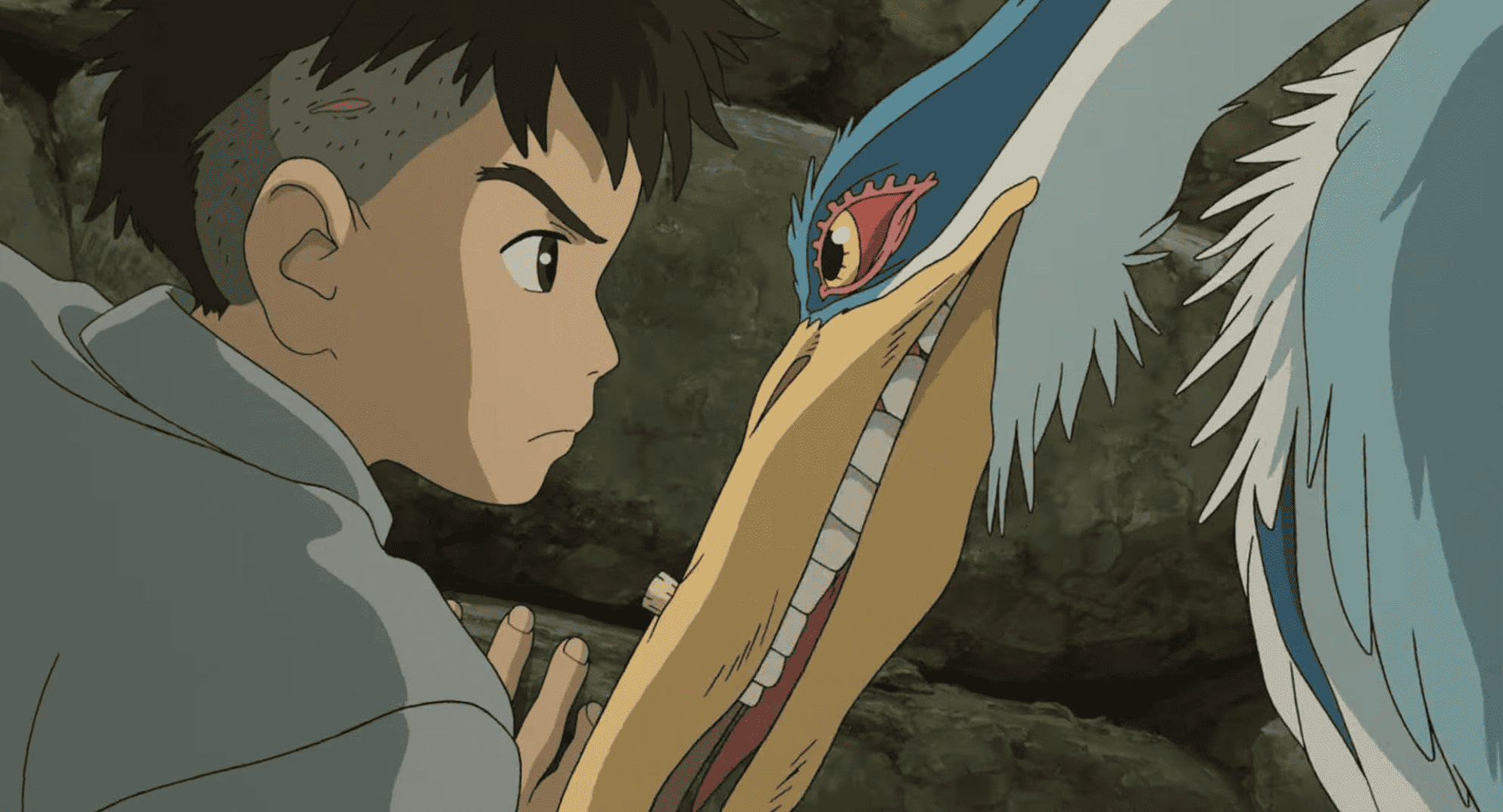
Movies from Studio Ghibli, especially those made by the legendary Hayao Miyazaki, are something special. What other animation studios grapple with, Ghibli does it effortlessly, putting you firmly in the middle of a world so lived in and magical that it stays with you long after the credits roll. “The Boy and the Heron,” supposedly Miyazaki’s final film (the man has retired four times, so take that statement with a grain of salt), once again immerses the audience in a fantastically whimsical and strange world. The animation is gorgeous, and I’m so glad I chose to watch the English dub because the cast killed it.
Yet, the film has glaring issues with pace, plot, and character motivations. Although I had a good time because I got to see a Studio Ghibli film in theaters on the day of release, something I hadn’t done before, I left very confused and with a lot more questions than answers. Usually, that’s a sign of a good film, but in this case, it’s a sign of the film’s failure to create the fully immersive experience I was expecting.
Too Slow, Too Much All at Once
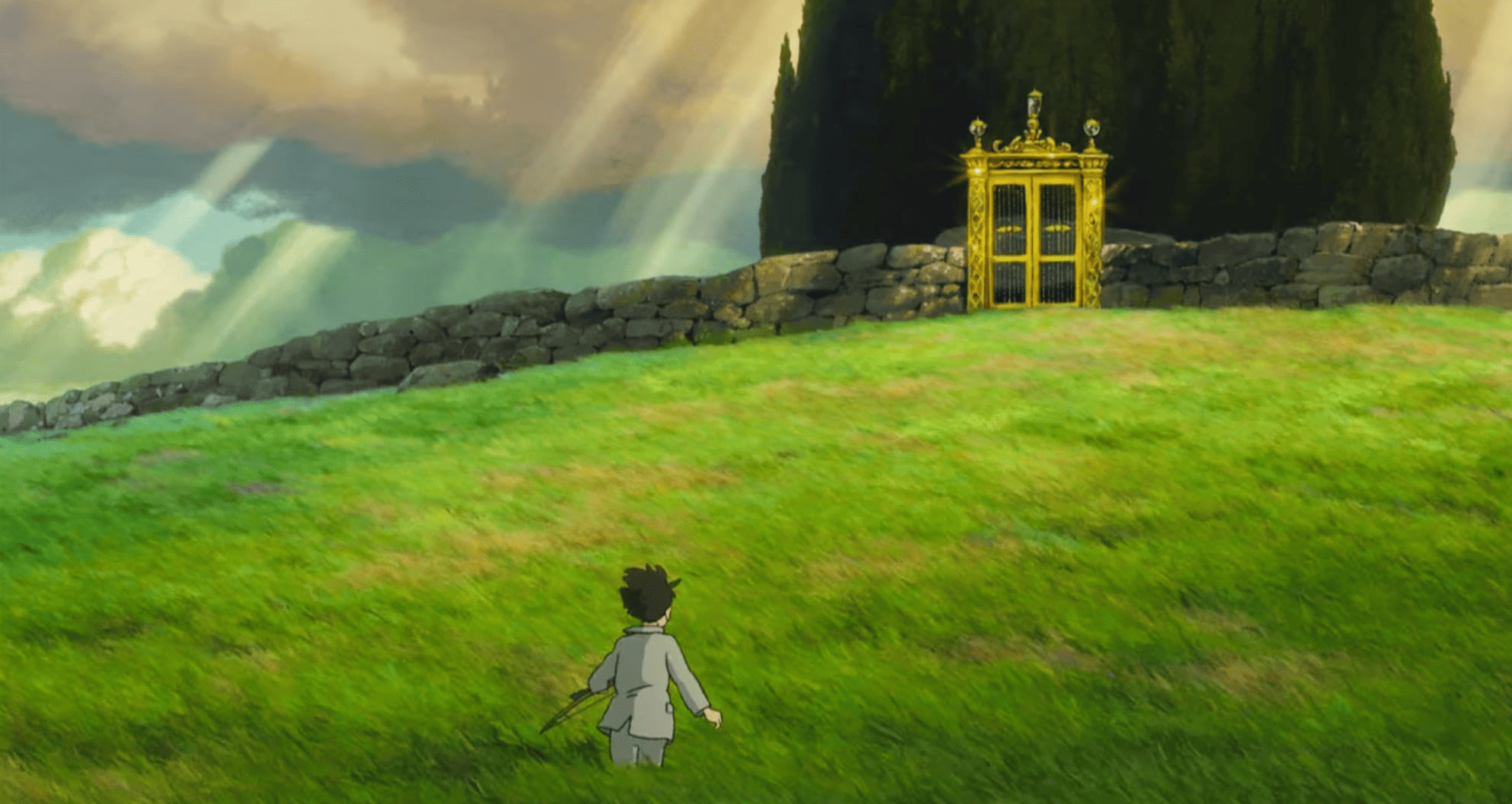
The film follows 12-year-old Mahito Maki (Luca Padovan) as he moves from Tokyo to a rural part of Japan during World War II, where he lives with his father, Shoichi (Christian Bale), and his father’s new wife, Natsuko (Gemma Chan), who is the younger sister of Mahito’s mother, Hisako (Karen Fukuhara). While the family dynamics are complicated and not well explained, the real problem is that the film takes a lot of time to lay out this part of the story. It does start to get interesting once the gray heron shows up and begins to prod Mahito to visit the old, haunted tower on the property. However, this drags on until finally, Mahito steps into the other world beneath his world.
That’s where the film really begins for me, as Mahito is forced to deal with the disappearance of Natsuko, who is believed to have gone into the tower. That’s where Mahito makes interesting friends and begins to change as a character, going from a sullen, quiet boy to a boy willing to risk his life for people who seemingly didn’t mean a lot to him before. The problem is that by the time Mahito reaches this world, there isn’t enough time to slow down and explain everything, having instead to rush through important plot beats that left me confused.
Miyazaki has never been the type of auteur to hand-feed the audience the plot. He’s always trusted that his audience can keep up, which I respect and admire, but in this case, it feels unfair to the audience. The plot is so efficient that it breezes past important moments that deserve a closer look. The ending, in particular, is an egregious example, with the film casually revealing that Lady Himi, a young girl Mahito befriended in this other world, is actually Mahito’s mother. This seems like a big moment, but instead, both characters accept these truths at once with no reaction. This leads me to believe that the characters learned this about each other off-screen, which is a waste of a great scene. That’s where the real meat of the story is, but it comes and goes in the span of a few seconds.
Characters Make No Sense at Times
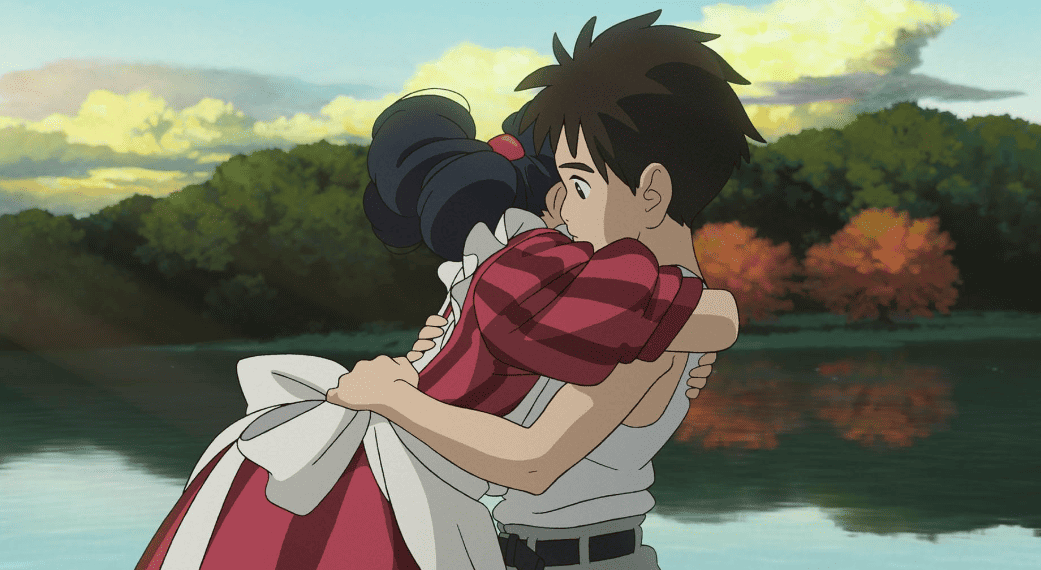
Character motivations in “The Boy and the Heron” don’t feel plausible, and some actions don’t feel earned. For example, it’s never explained why Natsuko heads into the tower to have her baby. I get that this is needed as a plot device. It’s the inciting incident that drives Mahito to head into the tower, but still, it feels like a moment that deserves some explanation. There’s another small moment earlier in the film where Mahito, after being beaten up by his classmates, hits himself in the head with a rock, which just seems uncharacteristic of him. I get the film needs this moment to show how frustrated and angry Mahito is with his life, but it doesn’t feel earned, and it’s quite shocking seeing as the film didn’t show his frustration beforehand.
There are a lot more moments with weak character motivations, but the one that threw me off is the scene between Natsuko and Mahito. Mahito finds Natsuko asleep in this large, creepy delivery room, but she immediately meets him with hostility, going so far as to tell Mahito that she hates him. While the film doesn’t show the two being close, it also doesn’t imply that there’s animosity between them, so this scene in particular felt like whiplash. It gets even more confusing when Mahito calls Natsuko “mother.” The most likely scenario is that Mahito says that as a way to show Natsuko that he accepts her as his new mother, but in having to piece it together afterward, I missed the next few scenes.
Playing Fast and Loose With the Rules
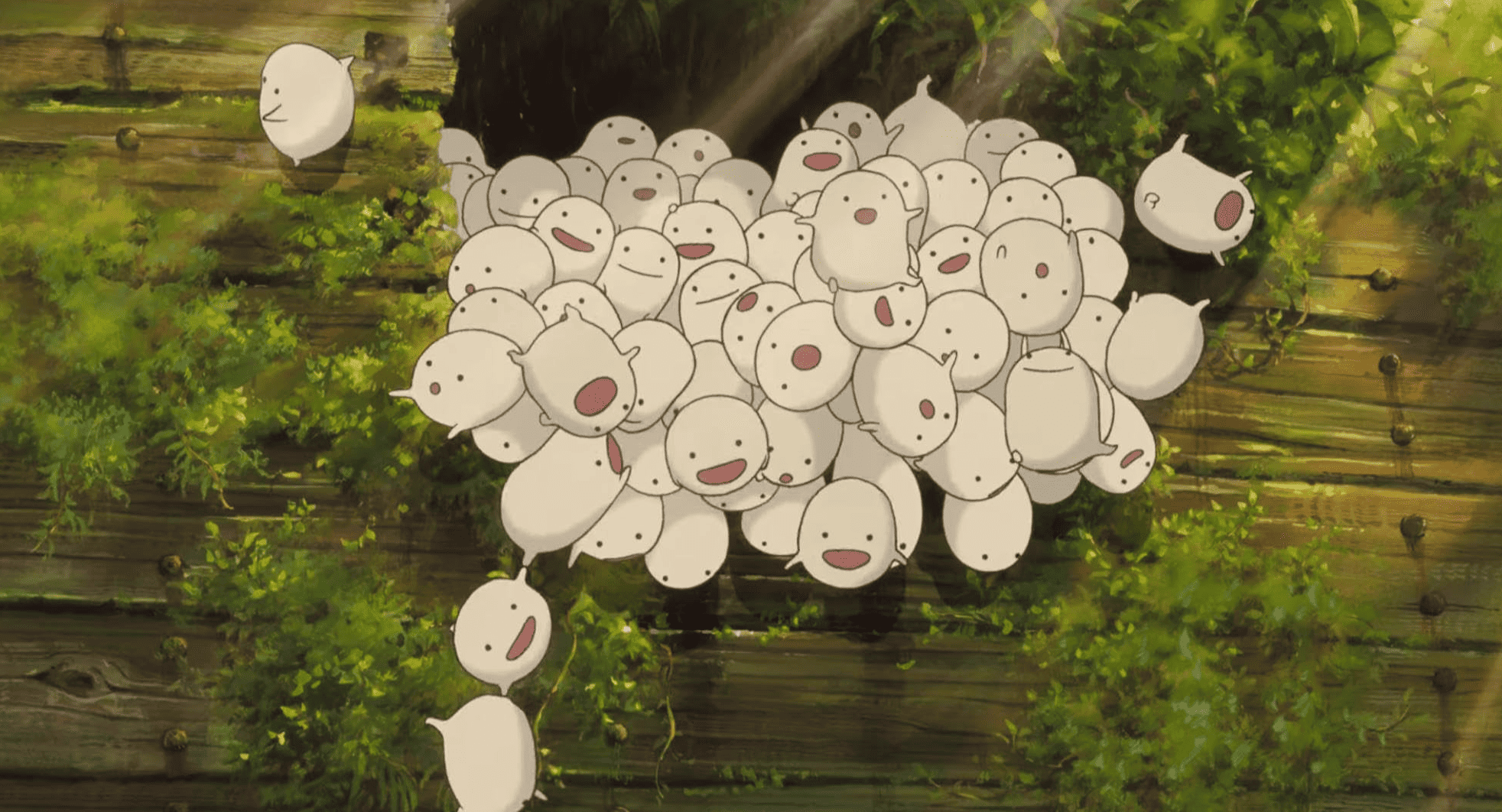
In all of Miyazaki’s works, I can’t remember a time when a film explained the rules of the world. In “Spirited Away,” for example, there’s never an explanation as to why there’s a bath house in the middle of nowhere or why Chihiro’s parents turn into pigs after eating the food. But in “The Boy and the Heron,” it’s revealed that the other world Mahito visits relies on the careful balance of a few stones — the stones are shaped into circles and cubes and triangles — stacked on top of each other. I don’t mind getting into the nitty-gritty of the world-building, but if you’re going to do it, you need to deliver. You need to go all in, and this film stops just short of that.
Mahito’s granduncle, who lured Mahito into the world to get him to take over, works in mysterious ways that are never explained either. When Mahito encounters a dying pelican, the pelican says that they were brought over by the granduncle to eat the cute warawara, but it’s never revealed why. The warawara are essentially the souls of humans yet to be born, so why would this man introduce an animal to eat these innocent souls? There’s so much to be explored there, but the film doesn’t give the audience anything to sink their teeth into. The moment simply passes and is never mentioned again, which is par for the course.
Not What I Was Expecting
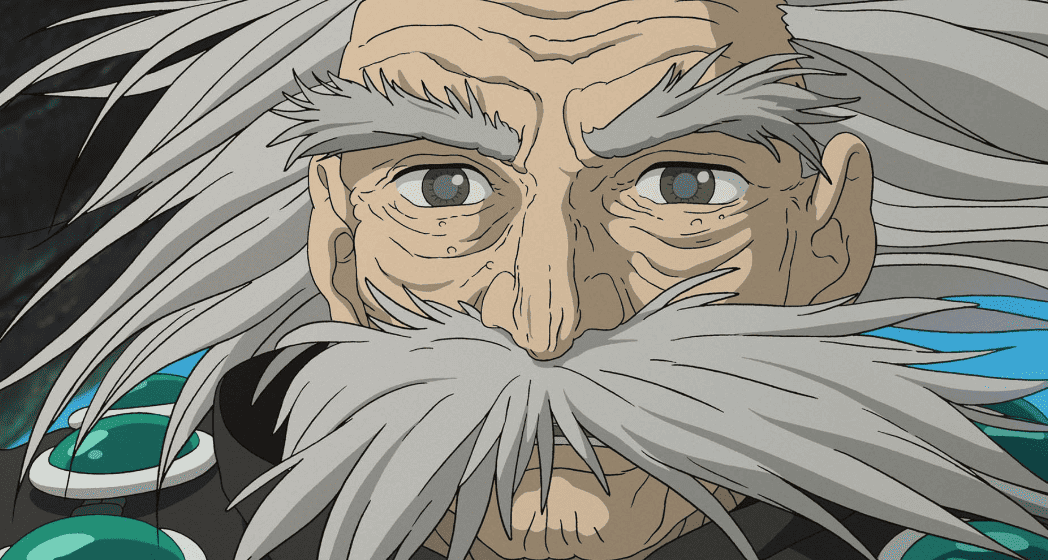
“The Boy and the Heron” is an incredible work of animation. The film is absolutely gorgeous, Joe Hisaishi’s music once again delights, and the English dub voice cast delivers incredible performances. Robert Pattinson, in particular, stands out as the Grey Heron, and others like Mark Hamill, Florence Pugh, Christian Bale, Dave Bautista, and Gemma Chan are also great. Because of those reasons, I still recommend this film. Whether you’re a longtime Studio Ghibli fan or a newcomer, seeing a work of animation like this in theaters doesn’t come often, so it is worth it solely for that reason.
At the same time, the film’s lack of plot direction, weak character motivations, and unexplained rules do subtract from the overall experience. “The Boy and the Heron,” is, ultimately, a movie that sticks with you. Typically, that’s the mark of a great film. In this case, however, it’s a mark of the film’s failure to deliver a complete experience.
